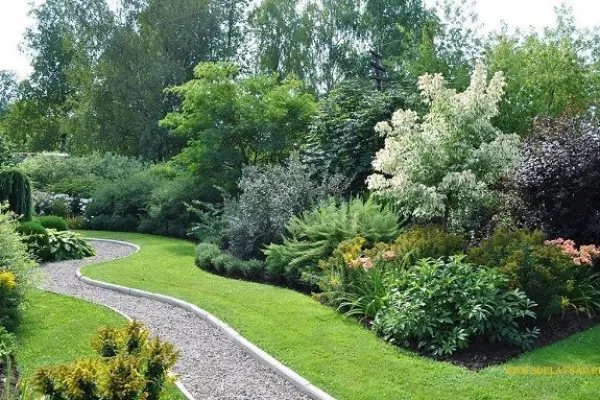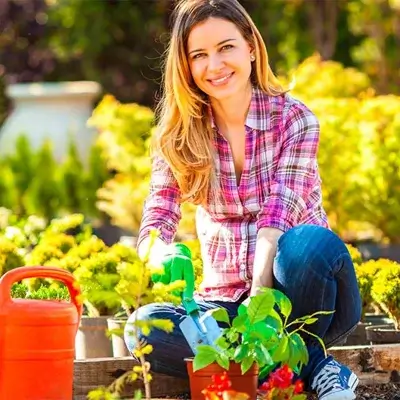Creating the perfect garden landscape begins with the proper use of trees and shrubs in landscape design. Did you know that professional landscaping with decorative plantings can increase property value by 20%? According to the International Federation of Landscape Architects (IFLA), proper use of green plantings reduces air conditioning energy costs by up to 40% and increases site biodiversity by 60%.
Ecological Functions of Plants in Landscape Design
 Trees and shrubs perform many ecological functions that are often underestimated when creating garden compositions. Understanding these functions will help create not only a beautiful but also an ecologically balanced landscape.
Trees and shrubs perform many ecological functions that are often underestimated when creating garden compositions. Understanding these functions will help create not only a beautiful but also an ecologically balanced landscape.
Key Ecological Functions:
- Air Purification: one mature tree absorbs up to 22 kg of CO₂ annually and produces oxygen for 4 people
- Microclimate Regulation: temperature reduction by 3-5°C in summer, air humidity increase by 10-15%
- Soil Protection: erosion prevention, structure improvement, organic enrichment
- Biodiversity Support: creating habitat for birds, pollinating insects, small animals
- Water Filtration: root system cleans rainwater from pollutants by up to 40%
- Noise Protection: dense hedges reduce noise levels by 6-8 decibels
"Competent garden design considering plants' ecological functions creates a self-sustaining ecosystem. For example, properly selected native species attract pollinators, increasing fruit tree yields by 30-40%," explains landscape ecologist Elena Voronova.
Trees and Shrubs Selection Checklist: Landscaping Tips
Start creating your garden landscape with this simple checklist for proper plant selection:
- Determine your climate zone (USDA)
- Measure the site area and identify functional zones
- Create a list of desired characteristics (height, seasonality, care)
- Check compatibility of plantings and site conditions
- Calculate budget and create a phased planting plan
This simple algorithm will help avoid 90% of mistakes in landscape project planning.
Basic Principles of Garden Plant Selection
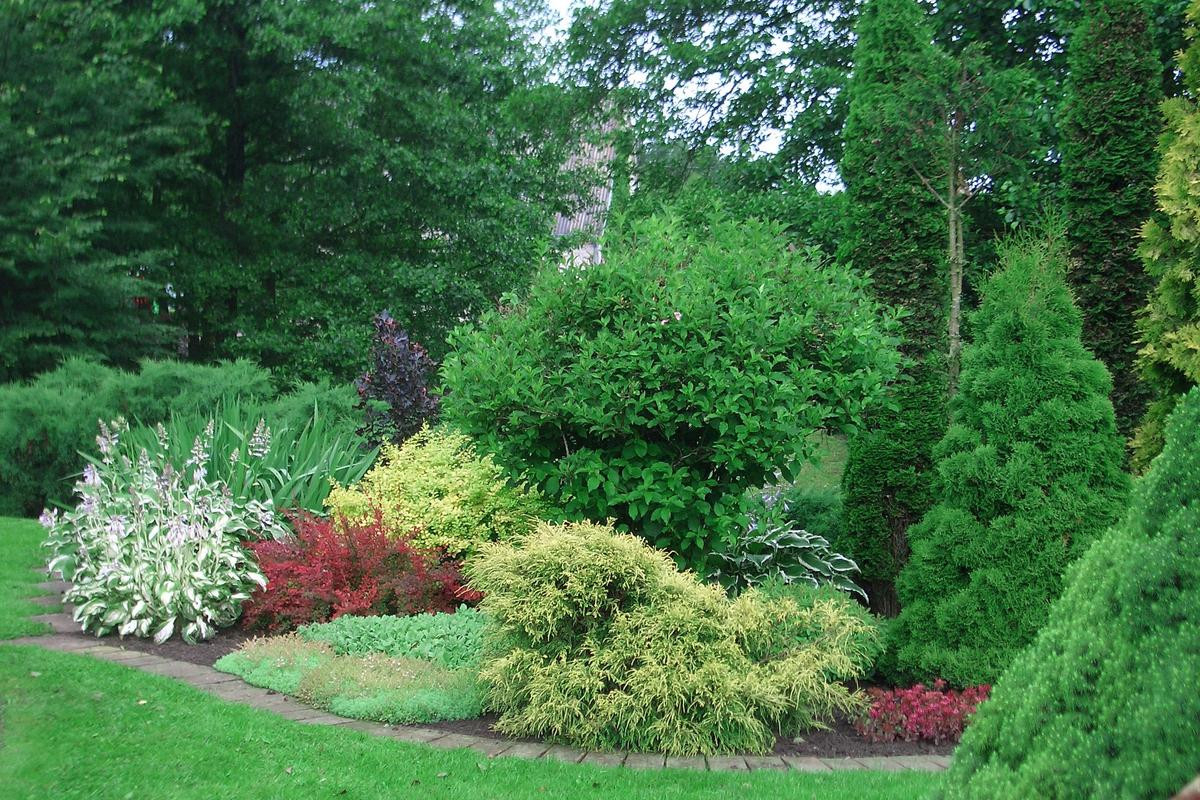 Choosing trees for the garden requires understanding basic landscape architecture principles. According to Forbes, the main trend in 2024 is creating sustainable and eco-friendly territories with minimal maintenance.
Choosing trees for the garden requires understanding basic landscape architecture principles. According to Forbes, the main trend in 2024 is creating sustainable and eco-friendly territories with minimal maintenance.
How to Choose Decorative Trees for the Garden: Classification and Cost
| Type | Height (m) | Application in Site Design | Sapling Price ($) |
|---|---|---|---|
| Tall | 15-30 | Background, wind protection | 150-500 |
| Medium | 5-15 | Group plantings | 75-200 |
| Low | Up to 5 | Foreground compositions | 30-100 |
| Dwarf | Up to 2 | Container plantings, alpine garden | 25-75 |
Investments in mature specimens pay off with immediate effect, but nursery saplings adapt better and cost less.
Complete Care Cycle for Decorative Plants
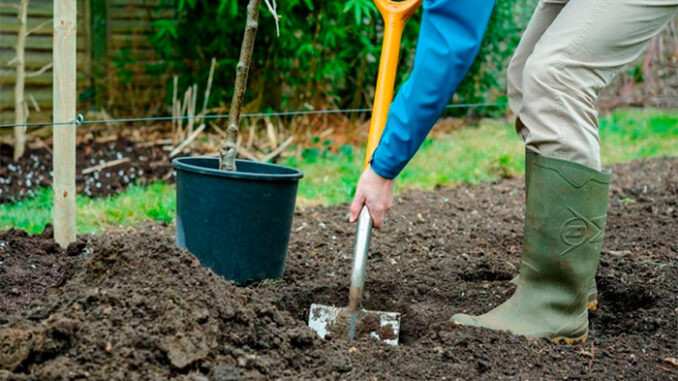 Proper garden care after planting is key to the longevity and beauty of your landscape. Follow this care calendar for decorative plants:
Proper garden care after planting is key to the longevity and beauty of your landscape. Follow this care calendar for decorative plants:
First Year After Planting (Critical Period):
- Watering: 2-3 times per week in hot weather, 20-30 L per tree, 10-15 L per shrub
- Mulching: 5-7 cm layer of bark or wood chips, renewal every 3 months
- Shading: protection from direct sun with netting in the first summer
- Support: securing tree trunks above 2 m with soft ties
Regular Care (From Second Year):
- Fertilizing: nitrogen fertilizers in spring, phosphorus-potassium in autumn
- Pruning: formative in early spring, sanitary year-round
- Disease Prevention: spraying with Bordeaux mixture in spring and autumn
- Winter Preparation: moisture-charging irrigation, covering young plants
5 Major Mistakes in Landscape Design
Avoid these critical mistakes when creating garden compositions:
- Ignoring final sizes - a cedar sapling will reach 15 meters after 20 years
- Incorrect lighting assessment - shade-loving plants die in open sun
- Lack of drainage - 80% of decorative plants cannot tolerate water stagnation
- Incompatible neighbors - walnut suppresses growth of most species within 10-meter radius
- Saving on sapling quality - plants with bare root system establish 40% worse
Professional Landscape Project Examples
Case 1: Johnson Family Property Transformation ($3,000)
Area: 12 acres, problem: lack of shade and privacy. Solution for $3,000: - 3 Norway maples for shade ($450) - 25 arborvitae for hedge ($750) - Mixed border of hydrangea, spirea, barberry ($500) - 5 ornamental apples ($600) - Drip irrigation system ($700) Result: temperature reduction by 5°C, savings of $200/month on air conditioning, property value increase of $15,000.
Case 2: Ecological Garden in Berlin Suburbs (€5,000)
"We created a completely self-sustaining garden on a 15-acre plot. We used only native plant species, created a rain garden for water collection, planted old variety fruit trees. Now we have 30 bird species living here, bees produce honey, and maintenance takes only 2 hours per week," shares owner Mark Schmidt.
Seasonal Decorativeness: Creating Year-Round Garden Composition
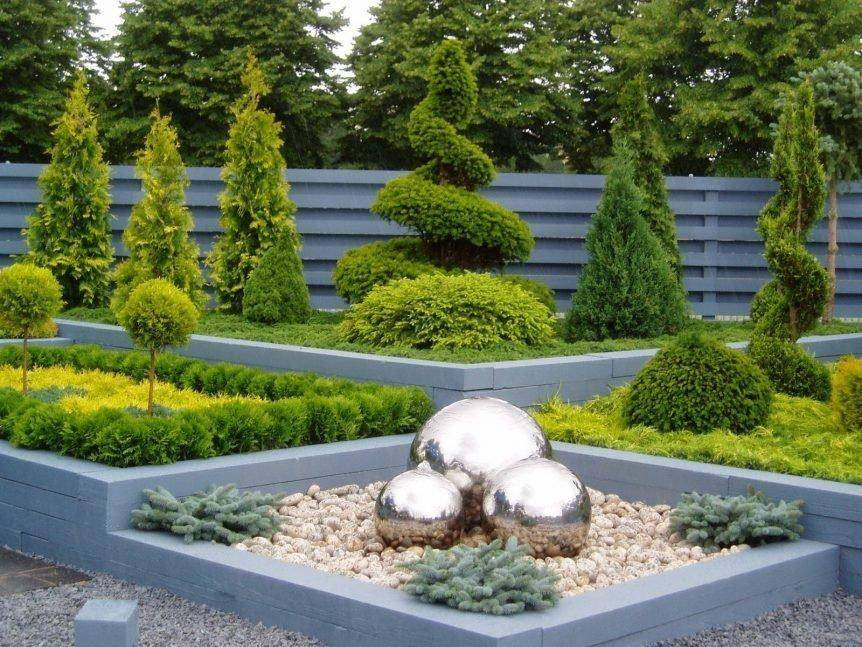 Professional garden design considers seasonal plant changes. Create compositions considering plant texture that will be attractive year-round:
Professional garden design considers seasonal plant changes. Create compositions considering plant texture that will be attractive year-round:
Spring (March-May):
- European forsythia - golden flowers before leaf emergence
- Star magnolia - white fragrant flowers, visual site enlargement
- Japanese cherry 'Kanzan' - pink double flowers for entrance area
Summer (June-August):
- Panicle hydrangea 'Limelight' - lush inflorescences, shade creation
- Japanese spirea 'Goldflame' - pink flowers, golden foliage
- Shrubby cinquefoil - flowering all summer
Autumn (September-November):
- Norway maple 'October Glory' - bright landscape accents
- Winged euonymus - crimson foliage, decorative fruits
- Viburnum 'Boule de Neige' - red berries, bird attraction
Winter (December-February):
- White dogwood 'Sibirica' - red stems on snow
- Western arborvitae 'Smaragd' - emerald needles, garden structure
- Juniper 'Blue Arrow' - vertical accents
Landscape Greening Styles and Plant Selection
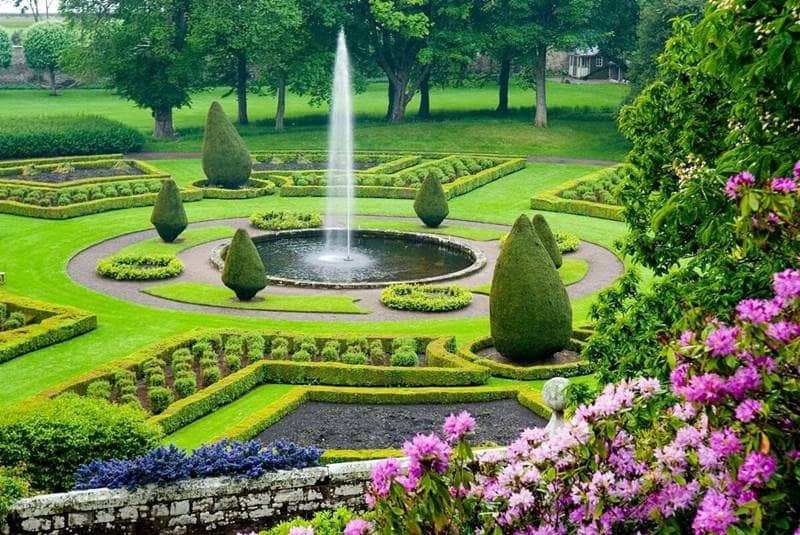 Each landscape greening style requires a special approach to garden plant selection:
Each landscape greening style requires a special approach to garden plant selection:
Classical Style
Symmetry, topiary trimming, clear lines. Ideal: lindens, arborvitae, boxwood.
Landscape Style
Nature imitation, free forms. Deciduous trees used: birches, maples, oaks combined with decorative shrubs.
Japanese Garden
Minimalism, symbolism. Coniferous trees: pines, junipers, Japanese maples.
Alpine Style
Mountain landscape in miniature. Dwarf conifers, creeping forms, miniature shrubs.
Your Path to the Perfect Garden Begins Today
Creating a beautiful and functional landscape is an investment in quality of life. Properly selected trees and shrubs will not only beautify your property but also create a healthy ecosystem that will delight you for years. Start by analyzing your site conditions, follow our landscape design tips, and you'll see how your space transforms. Remember: the best garden is one created considering natural principles and requiring minimal care!
